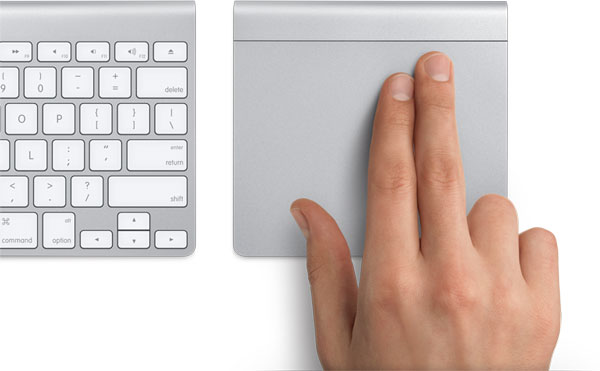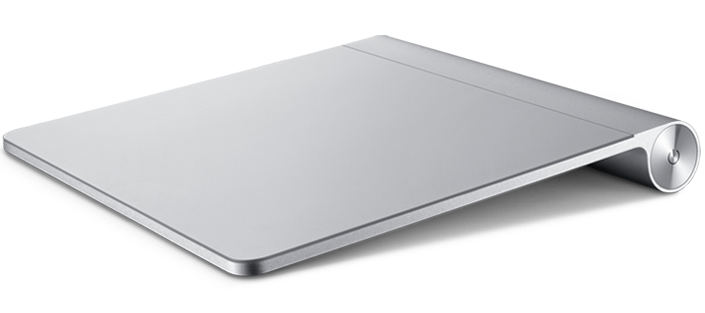In today’s modern world, technology has become an integral part of our lives, simplifying tasks and amplifying our productivity. Among the myriad of devices that have revolutionized the way we interact with our computers, the Apple Trackpad stands out as a sleek and sophisticated tool for navigation and control. Whether you’re a tech enthusiast exploring the world of Apple devices or a professional seeking efficient ways to enhance your workflow, learning how to connect the Apple Trackpad to your device is an essential skill that can unlock a world of possibilities.
Connecting the Apple Trackpad to your device may seem like a daunting task, but fear not! In this comprehensive guide, we will unravel the steps required to seamlessly connect your trackpad to your device, ensuring a smooth and effortless setup process. From understanding the compatibility requirements to navigating the settings menu on your device, we will equip you with the knowledge and confidence to effortlessly connect and utilize the Apple Trackpad to its full potential. So, grab your Apple Trackpad and let’s embark on this journey together, as we delve into the world of seamless connectivity and enhanced productivity.
- Ensure that your Mac is turned on and Bluetooth is enabled.
- Go to the Apple menu and select System Preferences.
- Click on the Bluetooth icon.
- Turn on your Apple Trackpad by pressing the power button.
- Wait for the Trackpad to appear in the list of available devices.
- Select the Trackpad and click on the Connect button.
- Follow any additional prompts to complete the pairing process.

Connecting the Apple Trackpad: A Step-by-Step Guide
In this article, we will walk you through the process of connecting your Apple Trackpad to your device. Whether you’re using a Macbook, iMac, or any other Apple device, the steps outlined below will help you set up and connect your trackpad with ease. Let’s get started!
Step 1: Check Compatibility and Requirements
Before you begin, it’s essential to ensure that your device is compatible with the Apple Trackpad. The trackpad is designed to work seamlessly with macOS and iOS devices, so make sure you are using the latest operating system to guarantee a smooth connection. Additionally, check that your device has Bluetooth capabilities since the trackpad connects wirelessly using Bluetooth technology.
Once you’ve confirmed compatibility, make sure your Apple Trackpad is charged or has fresh batteries. This will prevent any interruptions during the connection process. Now, let’s move on to the next step.
Step 2: Enable Bluetooth on Your Device
To connect your Apple Trackpad, you need to ensure that Bluetooth is enabled on your device. On macOS, click the Apple menu on the top-left corner of your screen and select “System Preferences.” From there, click on “Bluetooth” and toggle the Bluetooth option to turn it on.
If you’re using an iOS device, go to the Settings app and tap on “Bluetooth.” Toggle the Bluetooth switch to enable it. Once Bluetooth is turned on, your device will start scanning for nearby devices to connect with.
Step 3: Put the Apple Trackpad in Discovery Mode
Now that Bluetooth is enabled, it’s time to put your Apple Trackpad in discovery mode. To do this, press and hold the power button on the trackpad until the LED indicator starts flashing. This indicates that the trackpad is ready to be paired with your device.
Keep in mind that the process may vary slightly depending on the model of your trackpad. Some trackpads may have a physical switch instead of a power button. Refer to the user manual or Apple’s support website for specific instructions related to your trackpad model.
Step 4: Pairing the Apple Trackpad with Your Device
Once the trackpad is in discovery mode, your device should detect it in the list of available Bluetooth devices. On macOS, go back to the Bluetooth preferences pane and locate your trackpad. Click on it and select “Pair” or “Connect.”
On an iOS device, you’ll see the Apple Trackpad listed under “Other Devices” in the Bluetooth settings. Tap on it to establish the connection. Your device will display a pairing code that you may need to enter on the trackpad or confirm on your device’s screen.
After successfully pairing, your Apple Trackpad should be connected and ready to use. You can customize its settings further by going to the “Trackpad” section in System Preferences (macOS) or the “Accessibility” settings (iOS).
Step 5: Troubleshooting
If you encounter any issues during the connection process, try the following troubleshooting steps:
1. Make sure both your device and the trackpad have sufficient battery or power.
2. Restart both your device and the trackpad.
3. Disable and re-enable Bluetooth on your device.
4. Unpair the trackpad from your device and repeat the connection process from Step 3.
If the problem persists, consult the user manual or visit Apple’s support website for further assistance.
Step 6: Enjoy Your Apple Trackpad
With your Apple Trackpad now connected, you can take full advantage of its intuitive gestures and precise control. Whether you’re scrolling, zooming, or navigating through apps, the trackpad provides a seamless and efficient user experience. Unlock the full potential of your Apple device with this powerful accessory!
Conclusion
In this guide, we have explained the step-by-step process of connecting your Apple Trackpad to your device. By following these instructions, you should be able to establish a stable and reliable connection. Enjoy the enhanced productivity and convenience that the Apple Trackpad brings to your digital workflow!
Frequently Asked Questions
In this section, we will address some common questions about how to connect an Apple trackpad. If you’re having trouble setting up your trackpad or experiencing connectivity issues, you might find the answers you need below.
1. How do I connect an Apple trackpad to my Mac?
Connecting an Apple trackpad to your Mac is a simple process. Here’s how you can do it:
First, make sure your trackpad is turned on and has sufficient battery power. Then, go to the Apple menu on your Mac and select “System Preferences.” In the System Preferences window, click on “Bluetooth.” Turn on Bluetooth if it’s not already enabled.
Next, press and hold the power button on your trackpad until the LED indicator starts blinking. Your Mac should now detect the trackpad. Once it appears in the list of available devices, click on it to establish the connection. Your Apple trackpad is now connected to your Mac!
2. Can I connect an Apple trackpad to a Windows PC?
Yes, you can connect an Apple trackpad to a Windows PC, but you’ll need to install additional drivers to ensure compatibility. Follow these steps:
First, make sure your Windows PC has Bluetooth capability. If not, you may need to use a USB Bluetooth adapter. Once you have Bluetooth set up on your PC, turn on your Apple trackpad and put it in pairing mode by pressing and holding the power button until the LED indicator starts blinking.
On your Windows PC, go to the “Settings” menu and click on “Devices.” Then, select “Bluetooth & other devices” from the left-hand menu. Click on “Add Bluetooth or other device” and choose the “Bluetooth” option. Your PC will start searching for available devices. When your Apple trackpad appears in the list, select it and follow any additional prompts to complete the connection.
3. Why is my Apple trackpad not connecting to my Mac?
If you’re having trouble connecting your Apple trackpad to your Mac, there are a few troubleshooting steps you can try:
First, ensure that Bluetooth is turned on both on your trackpad and your Mac. Check the battery level of your trackpad and replace the batteries if necessary. Restart your Mac and try connecting the trackpad again. If the issue persists, try resetting the trackpad by turning it off and on or removing and reinserting the batteries.
If none of these steps work, there may be an issue with your trackpad or your Mac’s Bluetooth hardware. In that case, it’s recommended to contact Apple Support for further assistance.
4. Can I use multiple Apple trackpads with one Mac?
Yes, you can use multiple Apple trackpads with one Mac. However, keep in mind that each trackpad will require its own Bluetooth connection. To connect additional trackpads, follow the same steps mentioned in question 1 for each trackpad individually.
Once connected, you can configure the settings for each trackpad separately in the System Preferences menu. This allows you to customize the behavior and gestures for each trackpad according to your preferences.
5. How do I disconnect an Apple trackpad from my Mac?
If you want to disconnect your Apple trackpad from your Mac, you can do so easily by turning off Bluetooth on either the trackpad or your Mac. Here’s how:
On your Mac, go to the Apple menu and select “System Preferences.” In the System Preferences window, click on “Bluetooth.” Find your trackpad in the list of connected devices and click on the “Disconnect” button next to it. Alternatively, you can switch off Bluetooth on the trackpad itself by pressing and holding the power button until the LED indicator turns off.
By disconnecting the trackpad, it will no longer be paired with your Mac, but you can always reconnect it following the steps mentioned in question 1 when needed.

Remember, the key to successfully connecting your Apple Trackpad lies in patience and attention to detail. Take the time to ensure that your device is compatible, that Bluetooth is enabled, and that you follow the pairing instructions accurately. Once connected, the Trackpad can offer a smooth and seamless user experience, allowing you to effortlessly navigate, scroll, and interact with your device. So, why wait? Take the plunge and connect your Apple Trackpad today – you won’t be disappointed!

